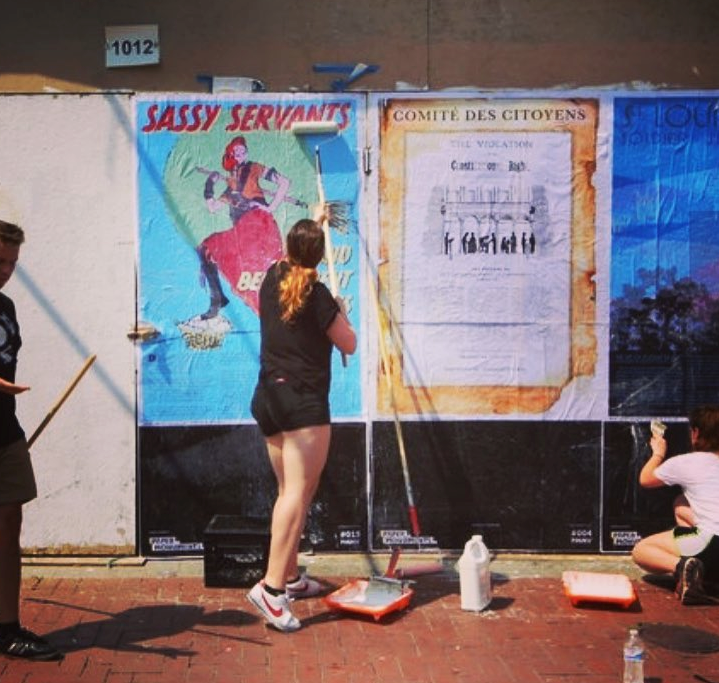For Paper Monuments, I created a poster illustration to honor the female Irish domestic servants of New Orleans. The poster was entitled Sassy Servants and Belligerent Bridgets.
"Paper Monuments is a public art and public history project designed to elevate the voices of the people of New Orleans as a critical process towards creating new narratives and symbols of our city that represent our collective vision and to honor the erased histories of the people, places, movements, and events that have made up the past 300 years as we look to the future." from www.papermonuments.org
I started the process by reading through the copy written by Dr. Laura Kelley. Dr. Kelley is a Tulane University professor who has developed classes about the Irish as well as the culture, history, and food of New Orleans and Southern Louisiana. She is also the author of The Irish in New Orleans.
In her writing, she cited these women's strength and ability to take agency over their new lives in America. Inspired by her copy, I created the illustration by blending turn-of-the-century Irish protest propaganda posters with the female comic book heroines of the 1980s.
Here is the original ink sketch I created for the project.
The final poster design featured in a digital mockup above reads:
"Domestic servants were a permanent feature of middle class families in 19th century America. We tend to think of them as lacking agency over their daily lives and without power to shape their future. Yet, Irish immigrant women belie that image, as a closer examination of this group demonstrates. Starting in the 1840s up to the Civil War Irish immigration to New Orleans was at a fever pitch. Nearly two million people left Ireland in this period due to the Great Famine. The wave of Irish immigrants, many of whom were women, coincided with an increase in demand for servants in middle class households and resulted in plentiful and steady employment opportunities. No skill requirements and promises to train on the job attracted single Irish women to these jobs. They quickly realized that the market was expanding and that specialization within this field, such as training as a parlor maid versus a general servant, would empower them to sell their skilled labor and thereby increase their earning potential.
High demand for their labor also gave Irish domestics a certain independence. When his Irish cook failed to appear for work one morning, local architect Thomas K. Wharton complained that they “do just as they please, go or stay, work or play.” That neither Wharton nor his wife considered firing the servant attests to the level of accommodation these Irish women received to act as it suited them. In fact, in an editorial refuting an article extolling Irish servants’ virtues one reporter stated that Irish females often forgot themselves “so far as to hire the employer, in place of the employer hiring them.” Servants’ favorable bargaining position also was used to enable the women to practice their faith. Attending Mass and participating in important rituals was of paramount importance to most Irish immigrants. As Wharton loudly complains again: “Went to market at 6 1⁄2 and for the first time in my life carried the basket myself as it is Easter Sunday and my Cook, being an Irish Catholic must of course be permitted to attend the early services of ‘ill mumbled mass,’ muttered by stupid Priests in equally stupid monkish Latin”. Additionally, since room and board were provided, domestics could save a large part of their earnings. They used this surplus in a variety of ways, including sending money home to Ireland. Indeed, Irish daughters reliably sent more remittances than sons and thus provided a lifeline that enabled other family members to leave. Beyond remittances, Irish immigrant women’s earnings also provided money for their families, their church, and their own financial security with remarkable success."
Written by Dr. Laura Kelley



Design in context:
The poster is currently on view at 625 Jackson Avenue in the neighborhood known as the Irish Channel. Previously, the poster was also on location at 1012 Canal Street, New Orleans, LA.
The last photo shows the poster being installed by volunteers using wheat paste and a paint roller.
